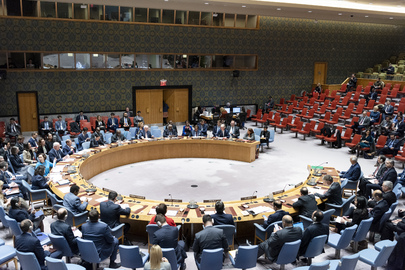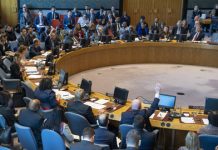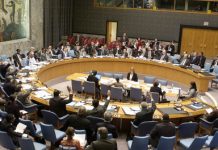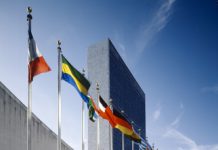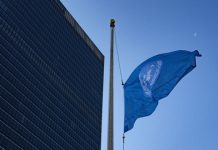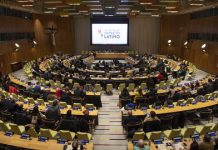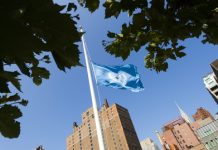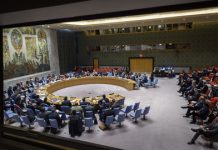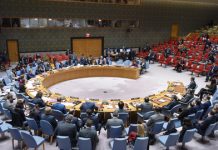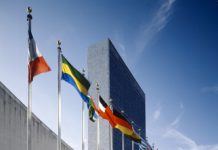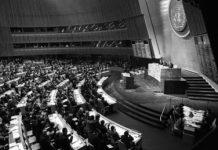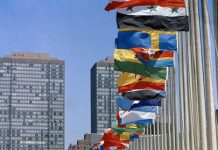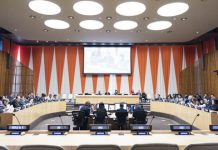Up pops the vibrant world of an orange economy, also known as the creative economy.
But, what exactly is it, and how does it foster peace, accelerate sustainable development and empower communities?
The former Colombian culture minister Felipe Buitrago, co-coined the term orange economy with the former President Iván Duque Márquez.
What is the orange economy?
The term “orange economy” was first coined by former Colombian former President Iván Duque Márquez and former culture minister Felipe Buitrago, a colour which resonates across cultures in creative, religious and cultural spheres.
In an exclusive interview with UN News during the fourth UN-backed World Entrepreneurs Investment Forum (WEIF) held recently in Manama, Bahrain, Mr. Buitrago explained why.
“When you think about activities such as audiovisual, filmmaking, television, video games, music in all its forms as well as crafts, visual arts, theater and also, activities like design, fashion, and increasingly other digital expressions of communication, you are talking about something that represents us, our identity in various forms,” he said.
“Those creative expressions live together in a very rich ecosystem where you have creators, you have dreamers, but you also have doers, entrepreneurs and policymakers, and that’s a very powerful sector of the economy,” he added
The power of creativity in Bahrain
Ammar Bashir, a Sudanese interior designer who currently resides in Bahrain.
In the heart of Bahrain, Ammar Basheir, a Sudanese interior designer, found himself at a crossroads after returning from his studies in the United Kingdom. Faced with a job market that demanded experience he didn’t have, he took a leap of faith, unknowingly pioneering a path in the burgeoning orange economy.
“I was rejected from all the jobs I applied for because I had just graduated,” he recalled.
The orange economy, as he puts it, is “the new kid on the block”, gaining recognition as a powerful engine for creativity, economic growth and cultural preservation, and a sector where collaboration and mutual support are key, fostering a sense of community and shared purpose.
“The beautiful thing about the orange economy is that the capital is the person’s idea,” said Mr. Bashir, whose company’s capital exceeded $10 million in three years, a testament to the power of creativity in generating wealth and employment. “We discovered that creativity brings money and creates jobs for people,” he said.
Comuna 13 is a hillside community in Medellín, Colombia.
Promoting peace and understanding
The orange economy plays an important role in promoting peace and understanding between peoples, former culture minister Mr Buitrago said, spotlighting an example of feuding gangs in Comuna 13 in Medellín, Colombia.
“We had two gangs that were actually brought together by a government and the mayor’s office, which created a joint festival of rap and reggaeton,” he explained.
With one gang being pro-rap and the other pro-reggaeton, organisers erected a stage that alternated between music styles. By sharing the spotlight, the gangs realised their mutual passion for music, that reggaeton and rap were not so different and that they could co-exist, he said.
“That actually reduced violence and helped them actually to start finding different ways to promote the development of the communities,” he added, “instead of trying to just control them by fear.”
Connecting culture to commerce in Morocco
Fatima Zouhra and her family own Yatto, which specialises in making dolls dressed in traditional Moroccan clothing.
Fatima Zouhra, a young artist from Morocco she and her family own a family business called Yatto, which specialises in making dolls dressed in traditional Moroccan clothing. The word yatto, as Fatima explained to UN News, is a Moroccan Berber name that is easy for everyone to pronounce.
“During the lockdown, we just stayed at home, nothing to do,” she said. “My sister, my mother and I made a lot of dolls because my mom sells a lot of dolls. We found that we had a lot of dolls, so we dressed them up.”
After the lockdown, they took part in an exhibition in Morocco and sold the dolls.
“People really liked the dolls, being very Moroccan because the little children play with American Barbies,” she said. “We would like to give the idea to the children to play with Moroccan dolls, with Moroccan clothes.”
Accelerating SDGs
But, how is the orange economy helping to accelerate the 2030 Agenda for Sustainable Development, which is considered a shared blueprint for peace and prosperity for people and the planet? Mr. Buitrago explained.
“If you examine the 17 Sustainable Development Goals (SDGs), you’ll notice that none of them explicitly mention the words culture, arts or creativity,” he said. “However, if you delve deeper, you will find that creativity, culture and art serve both as means and ends of the SDGs. This is very powerful because culture is an excellent and important tool that brings people together to achieve many of the SDGs.”
He said culture facilitates employment, inclusion, ecological sustainability of cities, better education and cooperation.
“When we gather, when we converse, when we share our perspectives of the world, we are engaging in a cultural exchange,” he added. “This is crucial for achieving the SDGs.”
Empowering women in Ethiopia
Samrawit Mersiehazen, a visionary creative designer from Ethiopia.
Samrawit Mersiehazen, a visionary creative designer from Ethiopia and the creative director of Samra Leathers, is using fashion to challenge economic imbalances and empower women in her country.
“In the fashion industry, we give lots of job opportunities, especially for women, and we add value for women and society,” she told UN News, underlining the significance of the orange economy in addressing pressing issues in Ethiopia and across Africa.
Highlighting a gap in educational support for creative industries, Ms. Mersiehazen that although the Ethiopian Government has established over 20 major universities in the last two decades, none focus on nurturing talents in creative fields.
“We produce lots of doctors, engineers, which after they graduate, they’re looking for a job for lots of years,” she said. “These big facilities didn’t help with job creation. So, this kind of the orange economy with the creative industry people like me, provide lots of job opportunities, especially for women.”
Ms. Mersiehazen’s enterprise demonstrates how the creative sector can lead to substantial employment opportunities. Samra Leather, known for its products ranging from bags to clothing for both men and women, stands as a beacon of what can be achieved when creativity is leveraged as an economic force.
A call to cherish cultural artifacts
When contemplating the dynamic world of the orange economy, the phrase’s co-founder Mr. Buitrago voiced a reminder to not overlook the cultural artifacts that shape people’s identity.
“The message is sometimes we take for granted that there’s a craft or that there’s a painting or that there’s a melody from our heritage, and that’s dumb,” he said.
“We need to take it seriously because that’s a message from the past that is being told to us by somebody that is alive today and that is willing to engage with us in dreaming about the future.”
Source of original article: United Nations (news.un.org). Photo credit: UN. The content of this article does not necessarily reflect the views or opinion of Global Diaspora News (www.GlobalDiasporaNews.com).
To submit your press release: (https://www.GlobalDiasporaNews.com/pr).
To advertise on Global Diaspora News: (www.GlobalDiasporaNews.com/ads).
Sign up to Global Diaspora News newsletter (https://www.GlobalDiasporaNews.com/newsletter/) to start receiving updates and opportunities directly in your email inbox for free.


